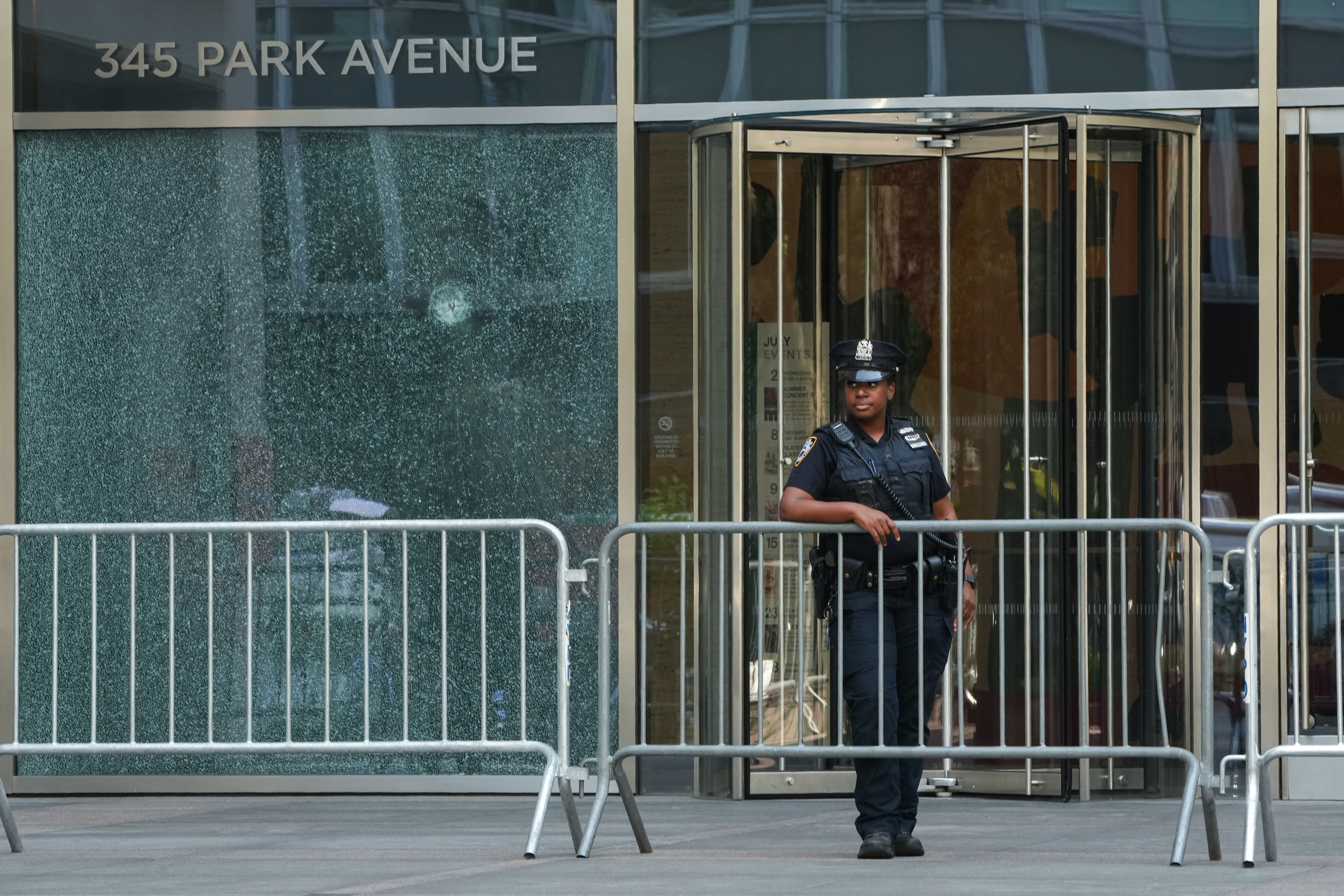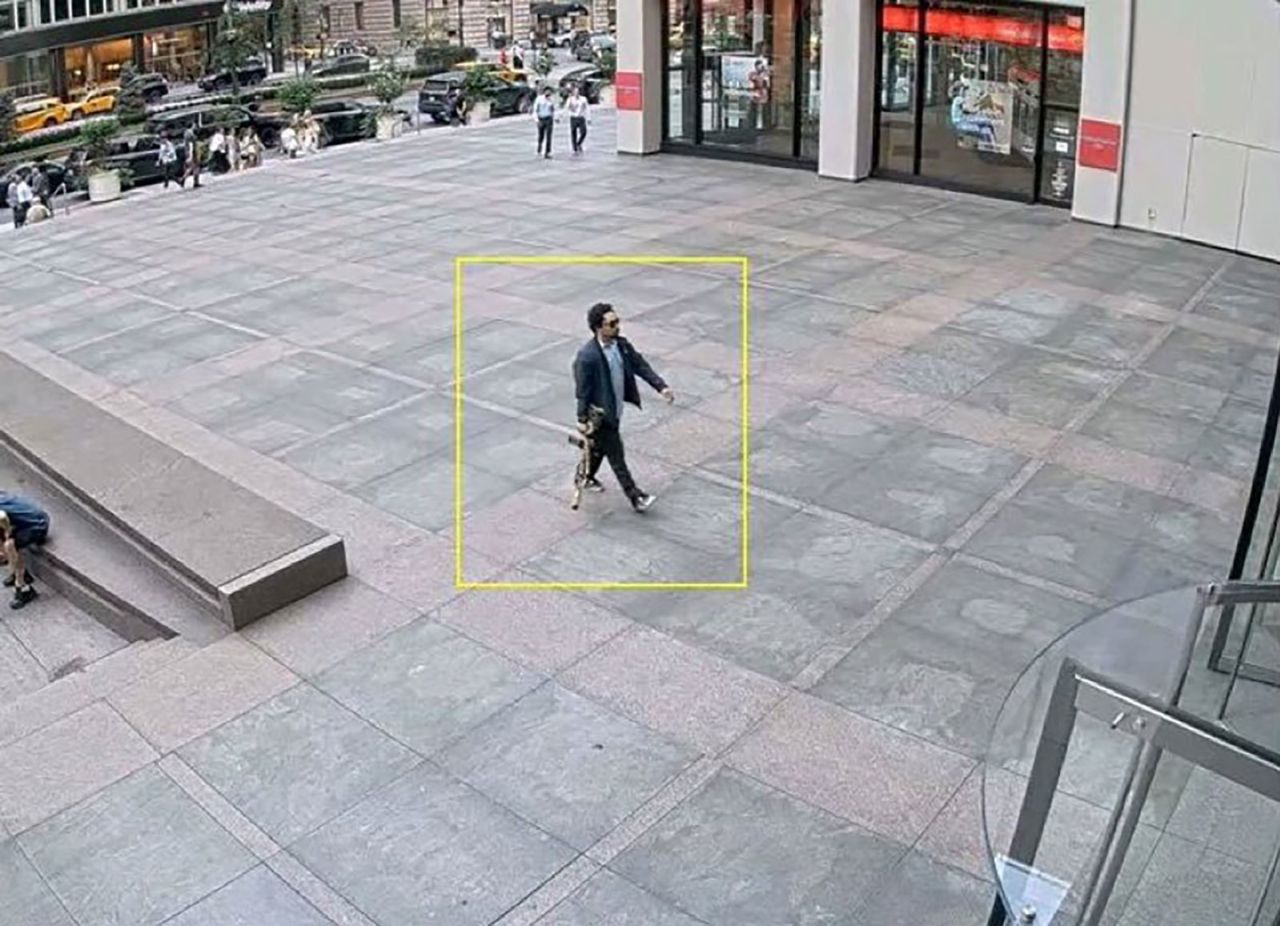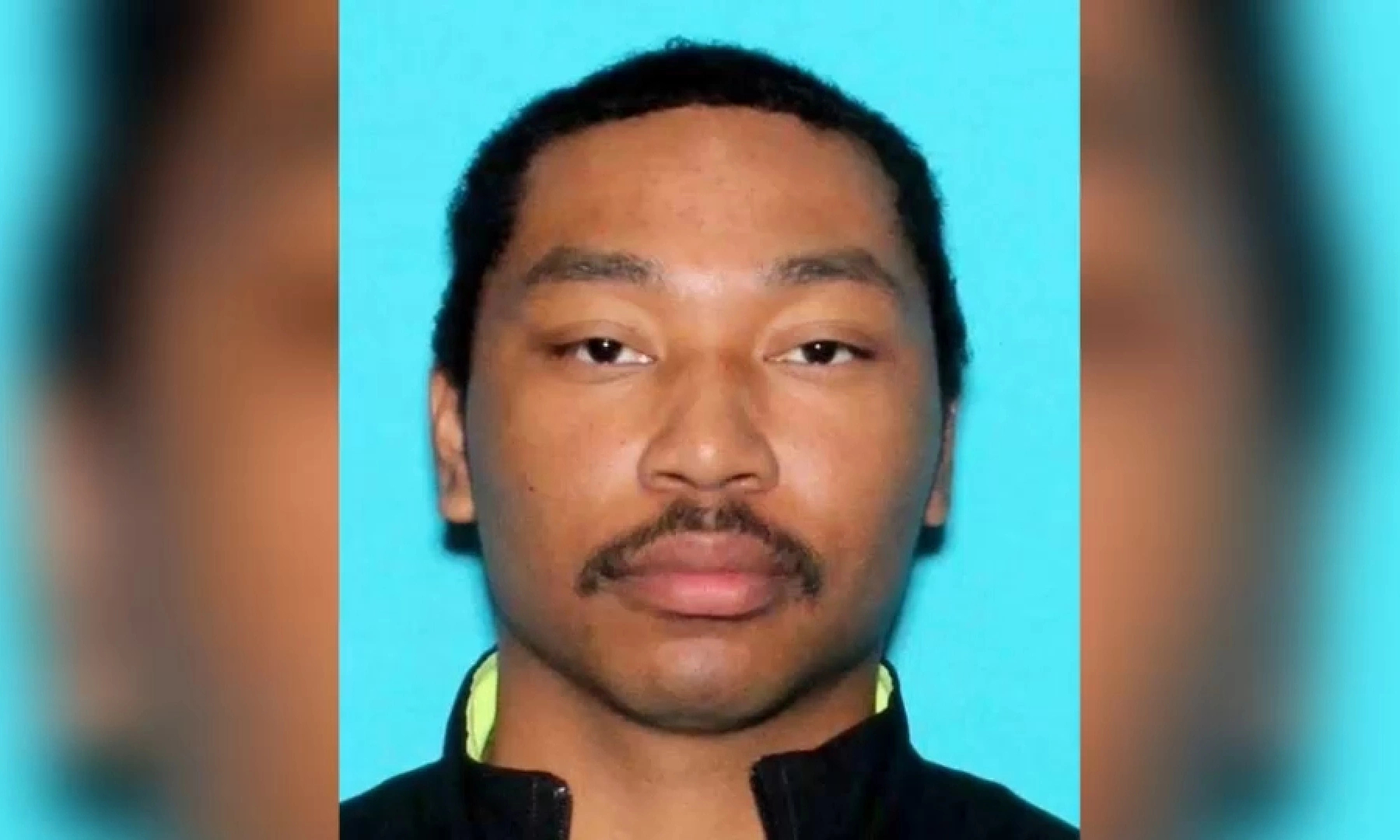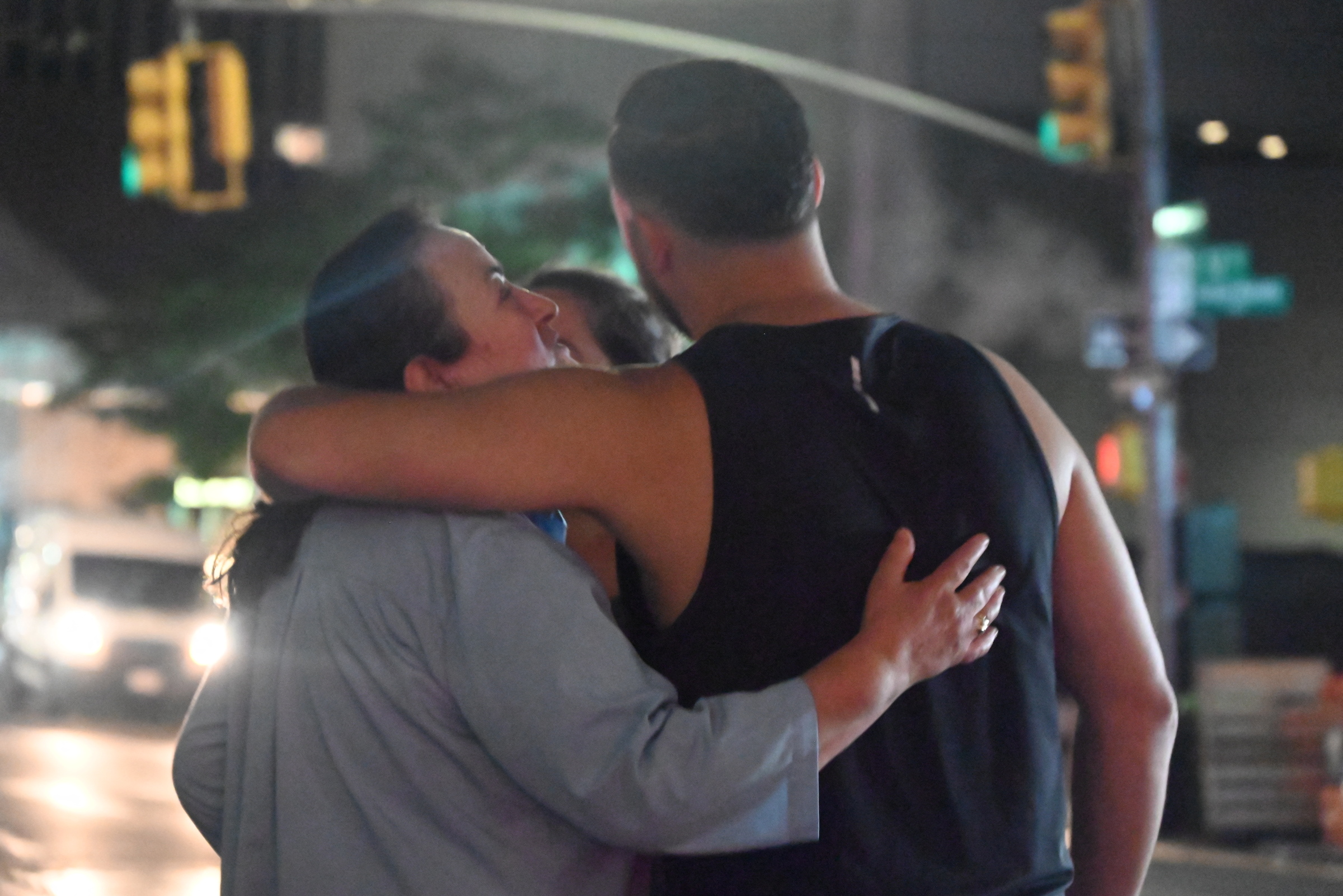On 28/7, Jon Ferrer, a senior tax specialist at KPMG, stayed late at his office in the 345 Park Avenue building in Midtown Manhattan, New York, to review tax returns. He heard a faint alarm while in the restroom but dismissed it, given the building's location in a secure area known for its low crime rate.
The area is home to luxury hotels and office towers with strict security protocols. These measures, coupled with Midtown Manhattan's reputation for safety, gave employees a sense of security.
Moments later, a colleague alerted Ferrer to a horrifying reality: a gunman was inside the building. "My heart dropped," Ferrer recalled.
 |
Police stand guard outside 345 Park Avenue in Midtown Manhattan, New York, on 29/7. Photo: AFP |
Police stand guard outside 345 Park Avenue in Midtown Manhattan, New York, on 29/7. Photo: AFP
Ferrer and about 15 colleagues barricaded themselves in a senior manager's office, pushing a desk against the door, covering the windows, and huddled together, waiting.
As the gunman roamed the 44-story 345 Park Avenue building, thousands of employees experienced a nightmare. The building houses offices for major companies like Blackstone, KPMG, and the NFL.
Within an hour, the gunman killed 4 people: an off-duty police officer, a security guard, a Blackstone senior managing director, and a real estate company employee. Several others were injured.
 |
The suspect enters 345 Park Avenue with a rifle on 28/7. Photo: CNN |
The suspect enters 345 Park Avenue with a rifle on 28/7. Photo: CNN
Before taking his own life, the suspect, 27-year-old Shane Tamura from Las Vegas, left a note claiming he believed he had chronic traumatic encephalopathy (CTE).
"Football gave me CTE and it also forced me to be on blood thinners," Tamura wrote, adding, "you can't fight the NFL." He accused the NFL of concealing the risks to players' brains to maximize profits.
The shooting highlighted a new reality for Midtown Manhattan office workers: personal grievances can escalate into violent attacks against corporations.
Last year, a similar incident occurred less than a 15-minute walk away when the CEO of UnitedHealthcare was fatally shot outside the Hilton hotel, also in Midtown Manhattan.
Police respond to the scene of the shooting in Midtown Manhattan, New York. Video: X/The Informant
At approximately 6:30 p.m., Tamura entered the 345 Park Avenue lobby with an M4 rifle. Wesley LePatner, 43, a prominent Blackstone managing director, was on her way to meet a colleague. Despite taking cover behind a pillar, she was shot and killed. The colleague she was meeting took the elevator down and found LePatner on the floor.
News spread through Blackstone's offices, which occupy about 20 floors. Blackstone employees received two automated messages: the first urged evacuation, the second advised sheltering in place.
A mid-level Blackstone employee working late went downstairs to retrieve a delivered dinner. As she pressed the elevator button, the delivery driver texted her about a gunman in the lobby. She and some colleagues took refuge in a mothers' room, accessible only with a key card.
 |
Gunman Shane Tamura. Photo: ABC7 |
Gunman Shane Tamura. Photo: ABC7
Another Blackstone employee entered the lobby immediately after the shooting and witnessed the chaos. She and others fled into a storage room. Realizing they were trapped, they took an elevator to another floor, alerted those still working, and urged evacuation. This employee and about 15 others hid in a restroom.
Blackstone regularly conducts active shooter drills, emphasizing the "ABC" principle: Avoid, Barricade, and Confront (as a last resort).
Blackstone chairman Jonathan Gray was in his 44th-floor office when colleagues informed him of LePatner's death. CEO Stephen Schwarzman was not in the building.
During the lobby shooting, Tamura killed Didarul Islam, 36, an NYPD officer, and security guard Aland Etienne. He also shot an NFL employee leaving the building.
NFL commissioner Roger Goodell later announced the employee was "seriously injured" but in stable condition at a hospital.
According to a Blackstone employee, Tamura apparently shot the waist-high revolving glass door in the lobby before taking the elevator. He went to the 33rd floor, aiming for the NFL offices, but mistakenly arrived at Rudin Management, where he killed employee Julia Hyman.
There's no indication Tamura entered the NFL's offices, located on floors 5 through 8. However, as news spread, NFL employees sheltered in place. They received their first alert from the league's security unit at 6:52 p.m. Fourteen minutes later, another message advised them to remain hidden and stay safe. The NFL floors became temporary sanctuaries.
Over an hour after entering the building, Tamura shot himself in the chest and died at the scene.
Ferrer and his KPMG colleagues remained in the manager's office for two to three hours, contacting loved ones and monitoring news updates. "We were all panicking until we were able to get out of there," he said.
As night fell, police escorted employees out floor by floor, starting from the top. Some were still being escorted out around 10 p.m.
The building closed on 29/7 for investigation. Chairman Gray wept while speaking about LePatner in a call with Blackstone employees.
 |
Employees reunite with loved ones after the shooting on the evening of 28/7. Photo: AFP |
Employees reunite with loved ones after the shooting on the evening of 28/7. Photo: AFP
In a 29/7 memo, KPMG US chair and CEO Tim Walsh and vice chair and COO Atif Zaim announced plans for counseling services. The memo also reminded employees of the mental health hotline: "Please stay safe and support each other," they wrote.
Vu Hoang (WSJ, AFP, Reuters)












